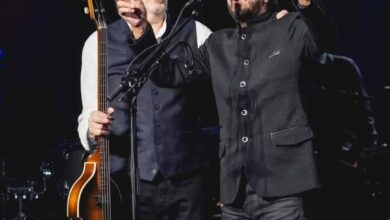It’s Easy to Picture Beethoven Enjoying This Extraordinary Show.
It’s often said that everything is larger in Texas. Reconsider that notion. Do you believe the Rockin’ 1000 is an enormous musical ensemble? Think twice. Since 1983, a choir consisting of 10,000 voices has assembled annually each December in Japan to perform the choral finale of Beethoven’s Ninth Symphony. When combined with the orchestra members, the result is an awe-inspiring concert.
The video below was captured in December 2011. It is led by Yutaka Sado, who has served as the choir’s General Director and conductor since 1999. Yutaka Sado, a Japanese conductor trained by Seiji Ozawa and Leonard Bernstein, was appointed as the Music Director of Austria’s oldest orchestra, the Tonkünstler Orchestra (established in 1907), in 2015.
Jonathan Lauzon succinctly remarks, “Composed by a German legend, sung by a Japanese multitude, gave chills to a Canadian nobody.” GoodVibes1997 states, “As a German, I’m impressed by the perfect pronunciation, the orchestra & the sheer number of musical talent.” The singing quality is even more impressive when considering that the majority of the singers are amateurs who complement professional soloists and a chamber choir. With more applicants than available spots, being chosen is an honor.
In Japan, Beethoven’s Ninth is linked with the Christmas season. Whether in shopping centers, community hubs, or concert halls, hundreds of performances of the Ninth take place. Numerous events feature sing-alongs to “Ode to Joy,” the choral segment of the symphony’s fourth movement, symbolizing peace, hope, and joy. The text for the choral part originates from a 1785 poem by Friedrich Schiller. Below is a touching mini-documentary on the yearly Ode to Joy performance featuring 10,000 singers.
Within the documentary, conductor Yutaka Sado insightfully observes that “having 10 000 singers is amazing, but if they’re not into it, it would be depressing. I need to make them feel like they’re not one of 10 000; that everyone has the main role. That’s been my biggest challenge from the first year and still is today.”
The inaugural performance of Beethoven’s Ninth in Japan has become a legendary tale. It took place towards the end of World War One. During the conflict, approximately 1,000 German prisoners of war were held at Bando Camp. The camp was managed humanely, facilitating sports and cultural interactions among prisoners, Japanese guards, and local residents. A German prisoner, Paul Engel, was permitted to instruct music within the camp. Twice weekly, he could provide lessons to interested Japanese individuals outside the camp.
It appears that the camp developed two orchestras, each with 45 members, two brass bands, and two choirs of sixty members each. Over 80 prisoners dedicated months to perfecting Beethoven’s Ninth, which was performed in Barrack One of Bando Camp on 1 June 2018, marking the first rendition of the piece in Japan.
The tradition of the 10,000-member Daiku (literally meaning nine, referencing Beethoven’s 9th) continued through the pandemic. In 2020, coinciding with the 250th anniversary of Beethoven’s birth, the event transitioned to a virtual format for the first time. Singers globally submitted videos, resulting in 11,961 singing clips accompanying the live orchestra. In 2021, the event was conducted as a hybrid of live and virtual performances. Check it out:
Regarding the Japanese affection for the choral portion of Ode To Joy, Toshiaki Kamei, the director of the All-Japan Association of Daiku Choral Societies says “Nowadays, we observe many conflicts between different religions or different ethnic groups happening around the world. We believe singing Daiku together with people from various cultural backgrounds helps us learn to accept diversity and promote world peace.





